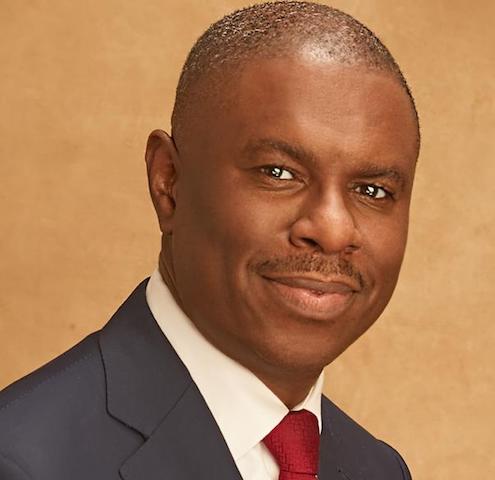The Naira Overhaul Drama and Unnecessary Citizens' Frustrations
By Tokunbo Adaja
THE saying that “all that begins well ends well” can only be the most apt to describe Nigeria’s naira overhaul saga. So, by extension, anything that starts badly may not end well or end in a fiasco. The design, implementation and nurturing of the naira overhaul policy has been shrewd in secrecy which negates the principles of democracy to which Nigeria subscribes. The spirit of consultation as well as openness to suggestions, dialogues, deliberations and negotiations are built into democratic governance to generate the best idea, the best policy and the best public-focused implementation strategy. The naira redesign policy was like a thunderbolt in the public space when it was announced by the Governor of the Central Bank of Nigeria, Mr. Godwin Emefiele, in October 2022. For many citizens, it was like a drama unfolding as many high-ranking and relevant government officials, including the Minister of Finance, Budget and National Planning, denied knowledge of the policy. However, the Central Bank Governor asserted that the CBN Board is autonomous and has the backing of the law to do so; however, it makes sense that the CBN Governor knows that to successfully implement such a policy, most of the stakeholders needed to be informed and trained, especially in a complex and fragile society like Nigeria.
Presumably, thanks to this, the initial (and subsequent) controversy that accompanied the introduction of the new naira notes would have been avoided. And, probably, the policy would have been modified, through the comments and suggestions of different stakeholders, which could have resulted in a seamless implementation of the policy. The doubt surrounding the announcement of the plan to introduce new naira banknotes, however, was dispelled when on December 15, 2022, the new naira banknotes in denominations of 200, 500 and 1,000 were launched. Currency redesign is not a new phenomenon anywhere in the world, whether in developed or developing countries. Basically, the currency overhaul is based on a number of premeditated goals or benefits such as improving the security of banknotes (probably by introducing certain security measures), mitigating counterfeiting of currency , controlling the amount of currency in circulation, reducing the overall cost of currency management, among others. Thus, the redesign of the currency depends on the needs and circumstances of the nation concerned.
When CBN Governor Mr. Emefiele announced the planned overhaul of the naira, he highlighted the policy objectives such as controlling inflation, controlling money supply, reducing the currency counterfeiting, promoting the cashless economy and controlling terrorism. However, the most atrocious economic element, the exchange rate, was not mentioned either directly or indirectly. Many small and medium businesses have closed their shops due to the exchange rate, while many Nigerians' take-out package cannot take them home. Many Nigerians expected Mr. Emefiele to include strategies in his policies to alleviate the suffering and frustrations of Nigerians due to the high exchange rate as well as non-availability of foreign currency in banks. /p>
During the launch of the new naira banknotes, Nigerians were expecting new features that would clearly differentiate the banknotes, much like previous fiscal years in which portraits of former rulers were introduced to preserve our common heritage and other devices of added security. But alas, instead of an overhaul, what we found, according to El-Rufai, Governor of Kaduna State, is “naira coloring”. Although CBN did not tell Nigerians how much was spent on “naira coloring”, we all know that billions of naira were allegedly committed to the project. According to a recent CBN statement, a whopping N281.07 billion was spent on printing banknotes between 2016 and 2020 (not redesigned notes). According to the CBN statement, in 2016, 33.37 billion naira was spent on printing banknotes, in 2017 (49.52 billion naira), in 2018 (64.04 billion naira), in 2019 (75.53 billion naira) and in 2020 (58.07 billion naira). And, according to the statement, the CBN spent N3.88 billion to destroy the mutilated banknotes during the period (2016 - 2020).
One can only ask a number of questions about this. For example, where did the CBN put new banknotes printed between 2016 and 2020? When or in what year did we enjoy or observe a massive circulation of new naira banknotes in Nigeria between 2016 and 2020? What material(s) or chemical(s) did CBN use to destroy the mutilated banknotes which cost N3.88 billion? Many other questions that require answers. The three 'redesigned' naira noes (200, 500 and 1000) entered circulation on December 15, 2023 with the announcement that they will co-exist with the old banknotes as legal tender, and that by January 31, 2023 all the old banknotes would cease to be the...

By Tokunbo Adaja
THE saying that “all that begins well ends well” can only be the most apt to describe Nigeria’s naira overhaul saga. So, by extension, anything that starts badly may not end well or end in a fiasco. The design, implementation and nurturing of the naira overhaul policy has been shrewd in secrecy which negates the principles of democracy to which Nigeria subscribes. The spirit of consultation as well as openness to suggestions, dialogues, deliberations and negotiations are built into democratic governance to generate the best idea, the best policy and the best public-focused implementation strategy. The naira redesign policy was like a thunderbolt in the public space when it was announced by the Governor of the Central Bank of Nigeria, Mr. Godwin Emefiele, in October 2022. For many citizens, it was like a drama unfolding as many high-ranking and relevant government officials, including the Minister of Finance, Budget and National Planning, denied knowledge of the policy. However, the Central Bank Governor asserted that the CBN Board is autonomous and has the backing of the law to do so; however, it makes sense that the CBN Governor knows that to successfully implement such a policy, most of the stakeholders needed to be informed and trained, especially in a complex and fragile society like Nigeria.
Presumably, thanks to this, the initial (and subsequent) controversy that accompanied the introduction of the new naira notes would have been avoided. And, probably, the policy would have been modified, through the comments and suggestions of different stakeholders, which could have resulted in a seamless implementation of the policy. The doubt surrounding the announcement of the plan to introduce new naira banknotes, however, was dispelled when on December 15, 2022, the new naira banknotes in denominations of 200, 500 and 1,000 were launched. Currency redesign is not a new phenomenon anywhere in the world, whether in developed or developing countries. Basically, the currency overhaul is based on a number of premeditated goals or benefits such as improving the security of banknotes (probably by introducing certain security measures), mitigating counterfeiting of currency , controlling the amount of currency in circulation, reducing the overall cost of currency management, among others. Thus, the redesign of the currency depends on the needs and circumstances of the nation concerned.
When CBN Governor Mr. Emefiele announced the planned overhaul of the naira, he highlighted the policy objectives such as controlling inflation, controlling money supply, reducing the currency counterfeiting, promoting the cashless economy and controlling terrorism. However, the most atrocious economic element, the exchange rate, was not mentioned either directly or indirectly. Many small and medium businesses have closed their shops due to the exchange rate, while many Nigerians' take-out package cannot take them home. Many Nigerians expected Mr. Emefiele to include strategies in his policies to alleviate the suffering and frustrations of Nigerians due to the high exchange rate as well as non-availability of foreign currency in banks. /p>
During the launch of the new naira banknotes, Nigerians were expecting new features that would clearly differentiate the banknotes, much like previous fiscal years in which portraits of former rulers were introduced to preserve our common heritage and other devices of added security. But alas, instead of an overhaul, what we found, according to El-Rufai, Governor of Kaduna State, is “naira coloring”. Although CBN did not tell Nigerians how much was spent on “naira coloring”, we all know that billions of naira were allegedly committed to the project. According to a recent CBN statement, a whopping N281.07 billion was spent on printing banknotes between 2016 and 2020 (not redesigned notes). According to the CBN statement, in 2016, 33.37 billion naira was spent on printing banknotes, in 2017 (49.52 billion naira), in 2018 (64.04 billion naira), in 2019 (75.53 billion naira) and in 2020 (58.07 billion naira). And, according to the statement, the CBN spent N3.88 billion to destroy the mutilated banknotes during the period (2016 - 2020).
One can only ask a number of questions about this. For example, where did the CBN put new banknotes printed between 2016 and 2020? When or in what year did we enjoy or observe a massive circulation of new naira banknotes in Nigeria between 2016 and 2020? What material(s) or chemical(s) did CBN use to destroy the mutilated banknotes which cost N3.88 billion? Many other questions that require answers. The three 'redesigned' naira noes (200, 500 and 1000) entered circulation on December 15, 2023 with the announcement that they will co-exist with the old banknotes as legal tender, and that by January 31, 2023 all the old banknotes would cease to be the...
What's Your Reaction?






















